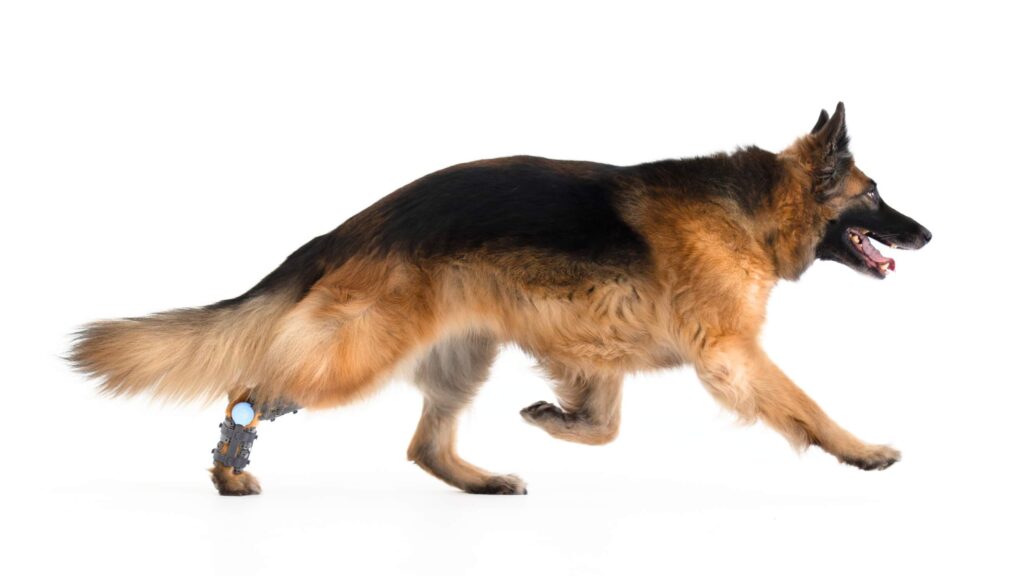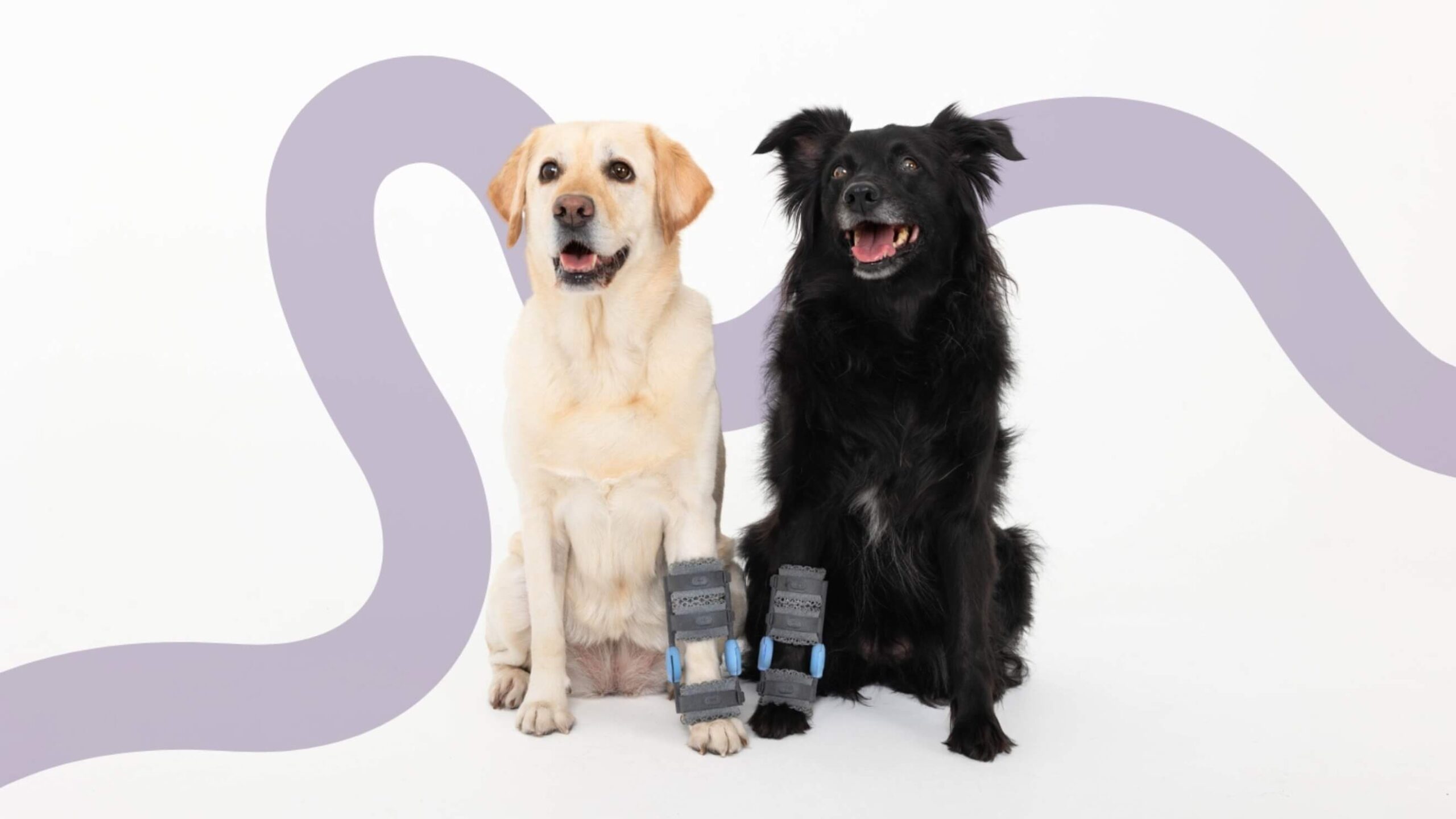As dedicated dog owners, your furry friend’s well-being is a top priority when it comes to pet health care. Even before contacting a veterinary professional, it is important to learn to understand your dog’s behavior, movements, and subtle cues, as this is crucial for identifying potential orthopedic problems in dogs before they escalate. This article aims to empower you with the knowledge to recognize early signs and symptoms of orthopedic problems in dogs right from the comfort of your home.
Five Signs of Orthopedic Problems in Dogs
As often observed, there isn’t usually a single specific cause of orthopedic problems in dogs; rather, it’s the result of multiple small factors accumulating throughout the dog’s life. These factors can range from genetics and diet to lifestyle choices and injuries. Understanding these contributing elements is essential for pet owners who wish to safeguard their furry friends from potential health problems, as a variety of underlying causes can lead to these issues.
Let’s explore five signs of orthopedic problems in dogs, providing you with the tools to take proactive measures for your dog’s health:
- Slippery surfaces
- Too intense or improper physical activity for dogs
- Inappropriate diet for dogs
- Genetic factors in pets
- Old age of pets
1. The Impact of Slippery Surfaces on Dogs’ Safety and Well-Being

While searching for dog health tips, you may sometimes overlook the relationship between slippery surfaces and dogs. Even ordinary walking on slippery surfaces, such as floor panels or tiles, poses a significant challenge to canine joints. Their paws often lack proper traction, causing them to slide slightly. This movement may go unnoticed by you, but it can place undue stress on their musculoskeletal system.
That said, you probably already got the idea that running or playing on a slippery floor is NOT a good option – the strain on the joints is such that it can directly lead to damage to tendons, ligaments, or muscles, ultimately resulting in degenerative joint disease.
Finally, slippery surfaces are especially dangerous for puppies whose growth has not yet concluded. Their skeletons do not provide sufficient support, which can result in developmental orthopedic conditions, e.g., elbow and hip dysplasia, osteochondrosis/osteochondritis of the shoulder, and hypertrophic osteodystrophy.
How to Prevent Injuries from Slippery Surfaces to Avoid Orthopedic Problems in Dogs?
Taking proactive measures can significantly reduce the risk of injuries caused by slippery surfaces. Here are some practical tips to help keep your dog safe and comfortable:
- If possible, equip your house with carpets.
- Move energetic play with your dog onto the grass or buy foam puzzles and use them to cover part of your living space.
- Ensure that the dog doesn’t jump from the couch onto slippery surfaces.
2. Too Intense or Improper Physical Activity Leading to Orthopedic Problems in Dogs

Imagine working at your desk for 8 hours straight and then being told to sprint 100 meters without preparation. Did you feel a stabbing pain and sharp muscle ache just imagining that? There’s no reason to believe it would be any different for your furry friend. Intense activity without proper muscle warm-up is a common cause of severe orthopedic injuries.
Just as humans need to gradually increase their physical activity levels to avoid injury, dogs also require careful consideration when it comes to exercise. Engaging in intense physical activity without considering your dog’s natural abilities can lead to significant risks, including muscle strains and joint injuries. For example, if you choose a sporting activity that exceeds their fitness level, or if you train your puppy too intensely, too soon, you may unknowingly set them up for a painful experience.
Understanding your dog’s exercise needs is essential. Puppies, in particular, should be introduced to physical activities gradually to ensure their developing bodies can handle the demands placed upon them. By prioritizing safe exercise routines and listening to your dog’s body, you can significantly reduce the risk of injuries and enhance their overall well-being.
How to Prevent Intense or Improper Physical Activity for Dogs?
Ensuring your dog engages in safe physical activity is essential for their overall well-being. Here are some helpful strategies to prevent injuries and promote healthy exercise habits:
- Start each walk at an easy pace, move to trotting afterward, and only then engage in intense activity. Remember about cooldown too!
- Do not strain your puppy – consult a physiotherapist before engaging in any intense activity.
- Visiting a physiotherapist or your Veterinary Clinic is also a good idea if you’re planning to start regular training in any canine sport with your dog. Do it BEFORE the first training.
3. Inappropriate Diet for Dogs

A poor diet can lead to excessive weight gain or a deficiency of micronutrients, which, in turn, increases the strain on joints or causes the bones to be more fragile. Unhealthy diet choices can result in obesity, making dogs weak and more prone to inactivity. As a result, they may start manifesting pain even during short walks, leading to further restrictions of movement and limitations on the dog’s mobility.
This scenario highlights the signs of a bad diet that pet owners must be vigilant about. Common mistakes in a dog’s diet, such as feeding inappropriate foods, can exacerbate these issues, making it essential to understand what not to feed your dog. The more dogs suffer from weight issues, the more likely they are to experience joint pain and limited activity, creating a vicious circle.
Recognizing these patterns and avoiding an inappropriate diet for dogs can significantly improve their quality of life. It’s important to ensure a balanced diet to prevent such problems from arising, as a nutritious diet can help maintain mobility and overall health.
How Can You Help Your Dog Avoid an Inappropriate Diet?
Maintaining a proper diet is crucial for your dog’s overall well-being and can help prevent orthopedic issues. Consider the following strategies:
- Control your dog’s weight. Avoid feeding them human food, even if those pretty eyes beg for it. A slice of cheese can constitute half of the daily caloric intake for small dogs!
- Avoid experimenting with home-cooked food without proper guidance from a dietitian, as it may lead to an imbalanced diet.
- Choose a Complete Diet for Your Growing Puppy: Select a diet that is appropriate for your puppy’s size and activity level. It’s important to consult with your dog’s veterinarian or seek advice at a pet store
4. Genetic Factors and Orthopedic Problems in Dogs

While there’s not much that can be done to alter genetics, several measures can help minimize its impact on your furry friend’s orthopedic health. Certain dog breeds are more prone to orthopedic conditions due to inherited traits, and some issues can be transferred from generation to generation. To combat these genetic predispositions, it’s essential to focus on preventive care and provide a balanced diet tailored to your pet’s specific needs. Additionally, regular genetic testing for pets can help identify any underlying health risks, allowing you to take proactive steps in managing your pet’s overall well-being and orthopedic health.
For dogs with genetic predispositions to orthopedic issues, using WIMBA braces can provide added stability and support, helping to manage these conditions effectively.
What Can You Do to Understand Your Pet’s Genetic Health?
Understanding your dog’s genetic predispositions is essential for their long-term health. Here are some proactive steps you can take:
- Examine your puppy! Seek veterinarian advice and, if there are any indications of disease, consider follow up evaluation with x-rays or other appropriate labs. Many conditions can be successfully treated at a young age!
- Knowing that your dog may potentially suffer from orthopedic conditions, make wise choices regarding their activities. Consider physiotherapy and muscle-building exercises as preventive measures.
5. Old Age of Pets

Just like humans, aging in dogs often leads to joint issues. Osteoarthritis, characterized by degenerative changes in the joints, becomes more prevalent in older animals. As dogs age, they may experience decreased mobility and increased stiffness, making it essential for pet owners to recognize these signs early.
What can you do to help my senior dog?
Supporting a senior dog requires a tailored approach to their unique needs. Here are some suggestions to enhance their quality of life:
- Adjust the activity level to your dog’s condition. While walks might be shorter or slower, and activities more calm, regular movement remains the best therapy.
- With your veterinarian’s approval, supplement your dog’s diet to support joint health.
- Consult your veterinarian for pain management. While osteoarthritis cannot be fully cured, effective pain management can significantly improve your dog’s quality of life
Investing in Your Pet’s Future: Orthopedic Care Matters
Ensuring your dog’s orthopedic health is a comprehensive approach that involves understanding various factors, including age, diet, genetics, and physical activity. By recognizing the signs of orthopedic problems early and providing appropriate preventive measures, you can significantly enhance your furry friend’s quality of life. Regular veterinary check-ups are essential for maintaining your pet’s health, allowing for timely interventions if problems arise. Additionally, a balanced diet tailored to your dog’s specific needs can help prevent obesity and joint strain. Incorporating safe exercise routines is crucial, particularly for puppies and older pets, to promote mobility and overall well-being.
WIMBA offers innovative orthotic solutions designed to support dogs dealing with orthopedic issues, helping them regain mobility and comfort. By prioritizing your dog’s orthopedic care with WIMBA, you can take a proactive step towards ensuring a healthier, more active life. If you’d like to explore all orthotic devices, we’re here to assist you in finding the perfect WIMBA orthotics for your cherished pet!
Do you want to learn more?
If you’re a caring pet parent looking for assistance, feel free to reach out to us—we’re happy to help you explore options for WIMBA orthotics for your beloved pet.

Author: Sara Wacławik, Head of Customer Care, WIMBA






